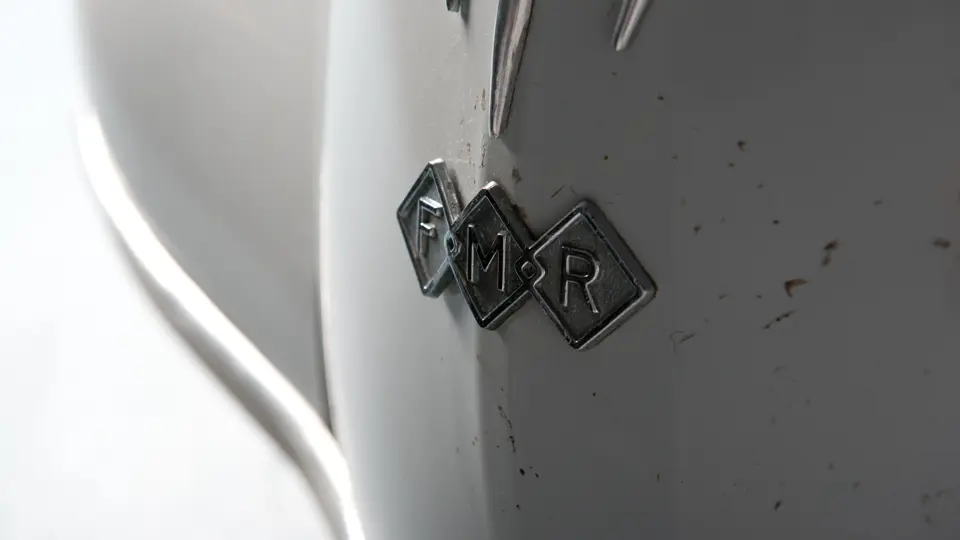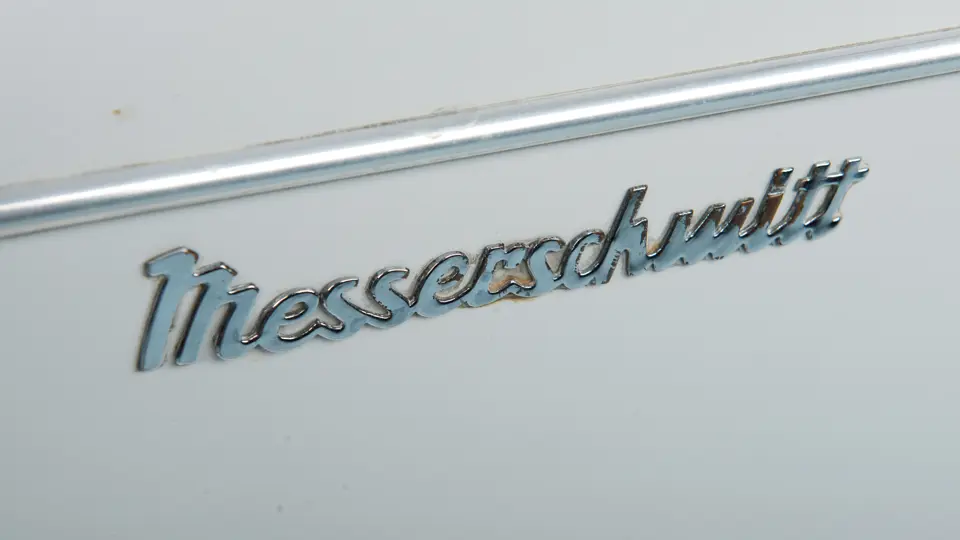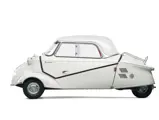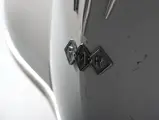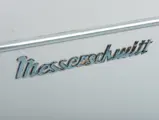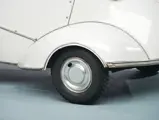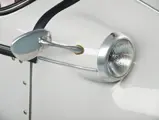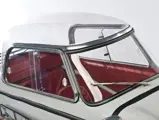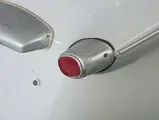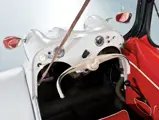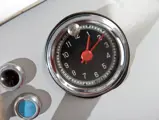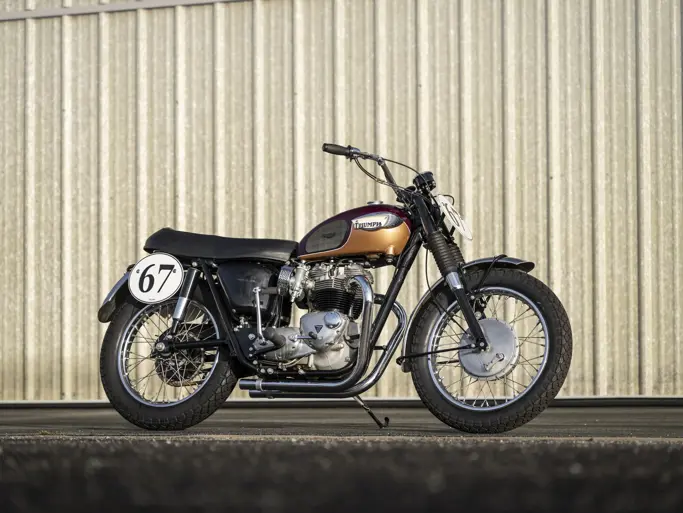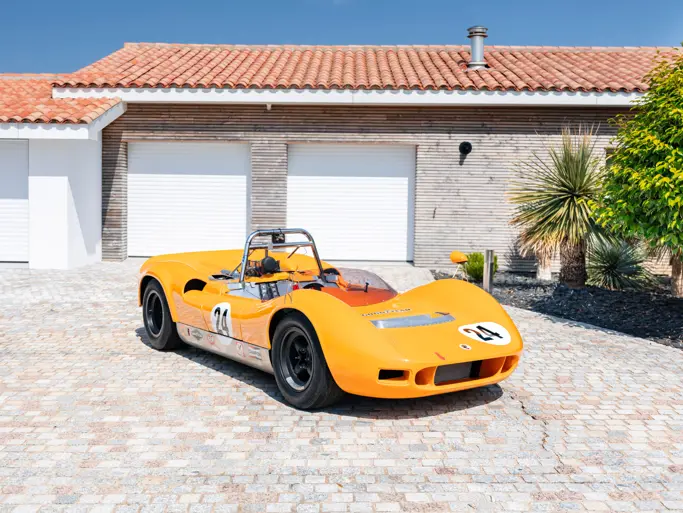A very original car, complete with a side luggage rack.
SPECIFICATIONS
Manufacturer: Fahrzeug und Maschinenbau Regensburg
Origin: Regensburg, Germany
Production: 30,286
Motor: Fichtel & Sachs 1-cyl., 2-stroke
Displacement: 191 cc
Power: 9.7 hp
Length: 9 ft. 3 in.
Identification No. 77111
One of the distinctive features of the Messerschmitt Kabinenroller was its ability to reverse as fast as it went forward. This was because there was no reverse gear, per se. The engine was merely stopped and then restarted with counter-rotation. The mechanism for this was called Dynastart, a starter-generator supplied by SIBA Elektrik GmbH. Dynastart was an efficient way to provide full electric starting capability on a small vehicle, and it became quite popular on microcars and scooters. Reverse-starting the engine involved stopping the engine, pushing in the key to the reverse position, and starting the motor in the opposite direction. The key activated a second set of points that were timed differently than the forward points so that they would throw the crank past Top Dead Center in the other direction.
Many detail design changes were made to the Kabinenroller in the late-1950s to reduce the cost and improve the efficiency of production. There were no more exterior two-tones, but a range of metallic paints was introduced. The interior trim was simplified, and the polished wood strips were eliminated. Color-matched interior paint was reduced to one scheme common to all exterior colors: a grey primer with black paint in visible areas only. The radio hole was phased out. The dashboard layout was redesigned yet again, with an Isetta-style lighting switch and toggle blinker switch. The heater hose now ran forward along the floor under the trim panel.
The rear swing-arm chaincase had been redesigned at chassis number 65,186. The change to Bosch Dynastart electrics at chassis number 68,494, with its corresponding larger crankshaft, was necessary, as Bosch had bought out Dynastart supplier SIBA in 1957. Other, later changes involved suspension bushings, wheel stud diameters, the cabin leather strap being changed to fabric, and finally, the T-handle was changed to an easier-to-use “L” shape.
This car features a side-mounted accessory luggage rack. A clever design, it had been available since the earliest days of the KR 175 and was oft adapted to the KR 200. A rear-mounted rack is also installed, doubling the luggage capacity. It is also optioned with a rare set of accessory ventilator wings, which direct air into the cockpit.
A largely original car, this Kabinenroller presents well, its white paint showing just a bit of surface rust bleeding. Its brightwork is generally very good, with just a few blemishes showing. The interior is red with white piping, exhibiting no significant wear, and the dashboard has both a clock and metric speedometer. The engine is clean, but it shows age and is not detailed. Overall, it is an honest, original, and desirable example of the KR 200.




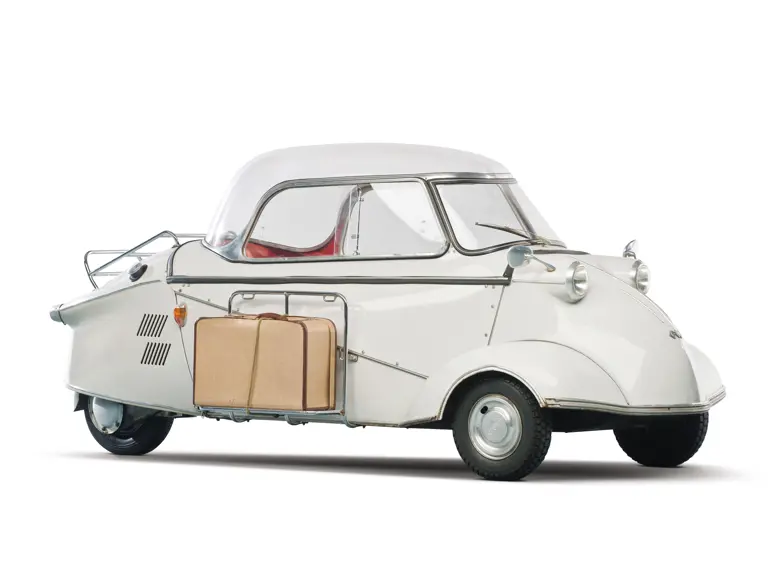
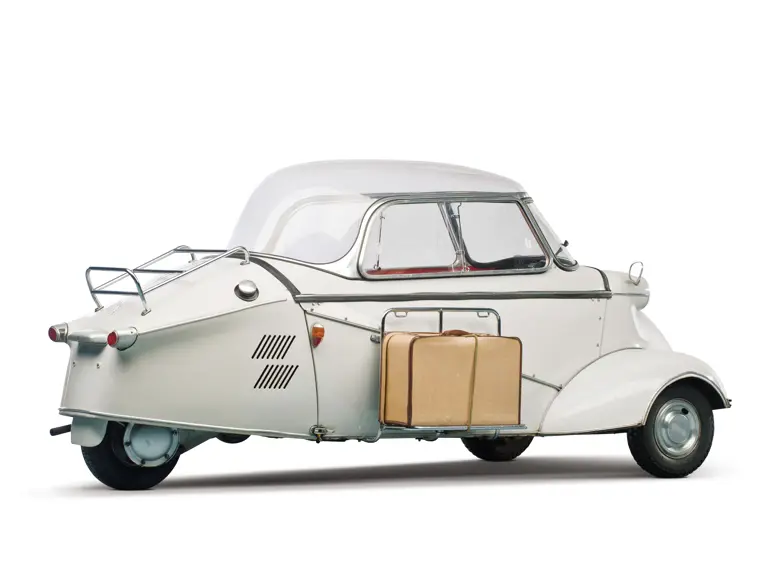

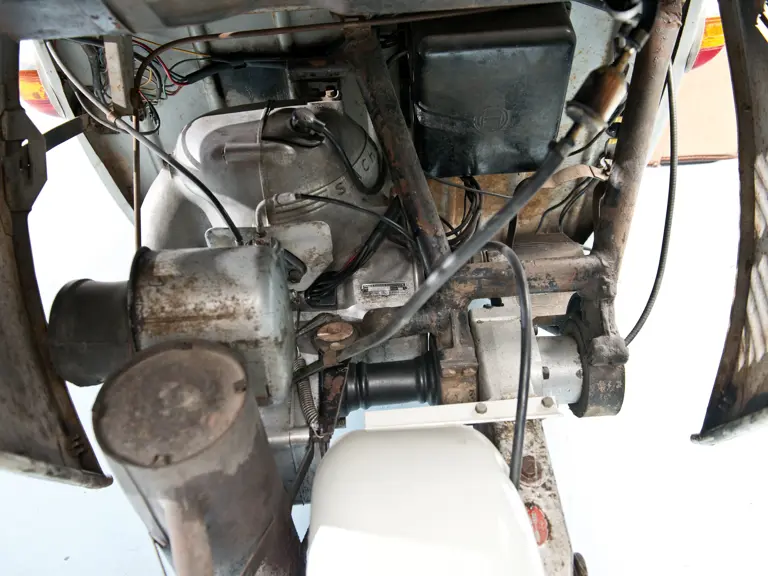
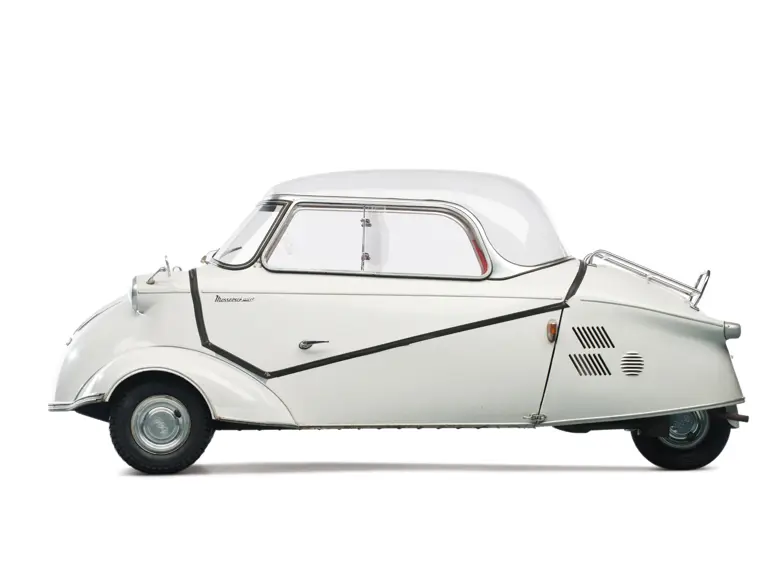
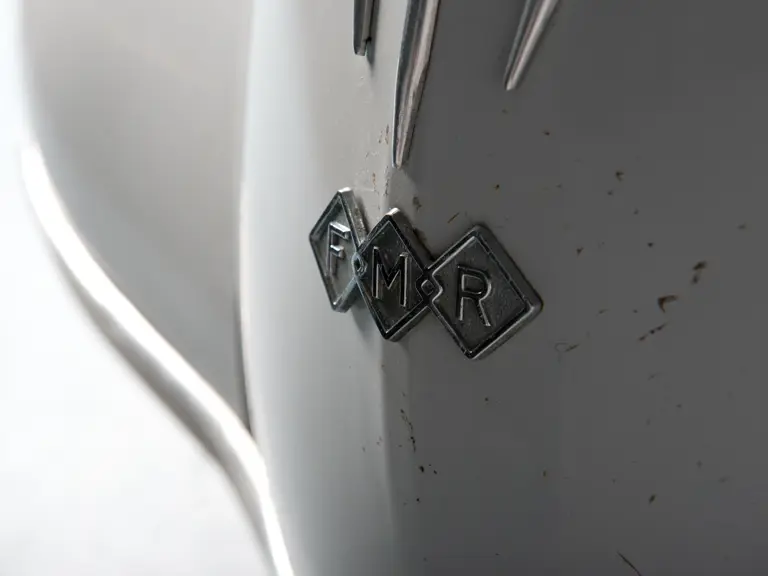
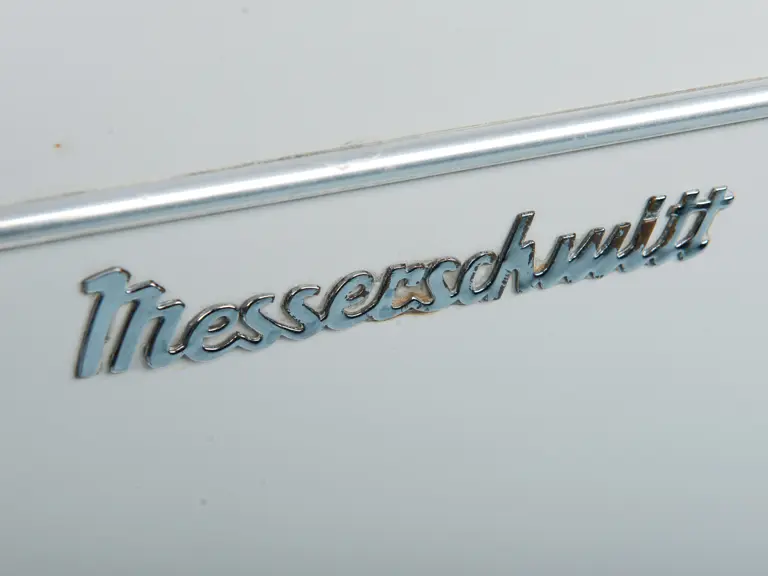
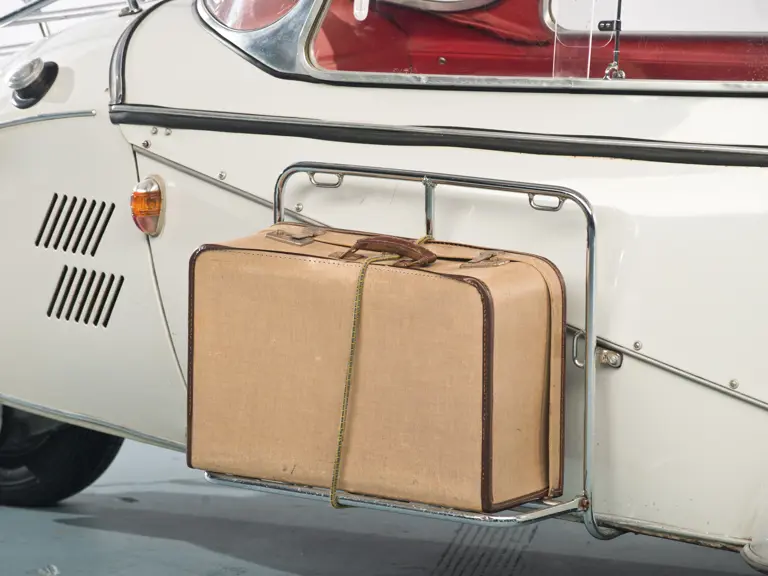
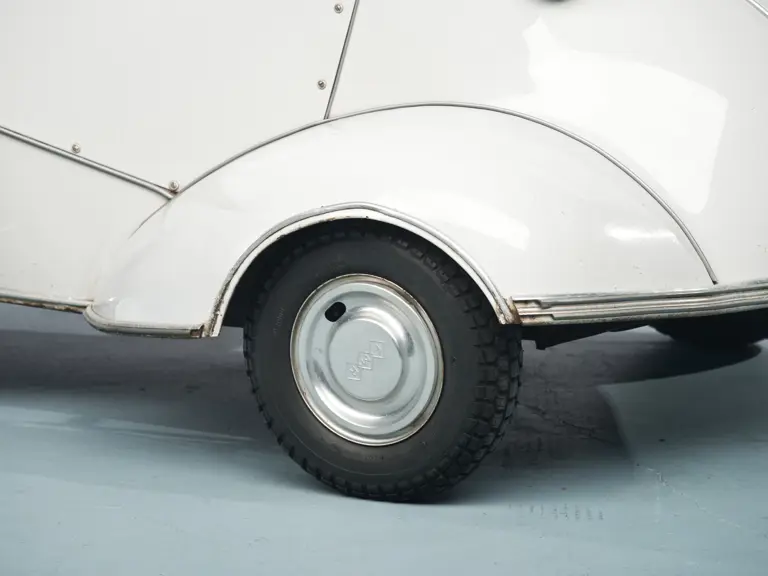
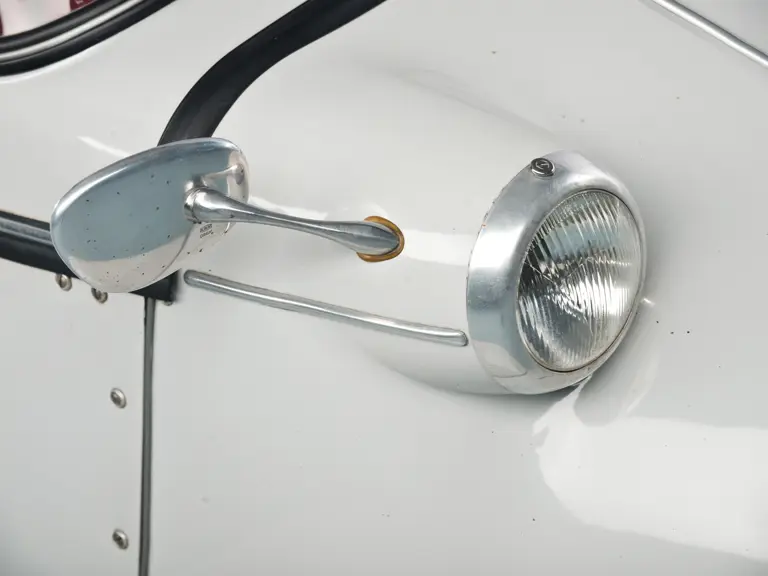
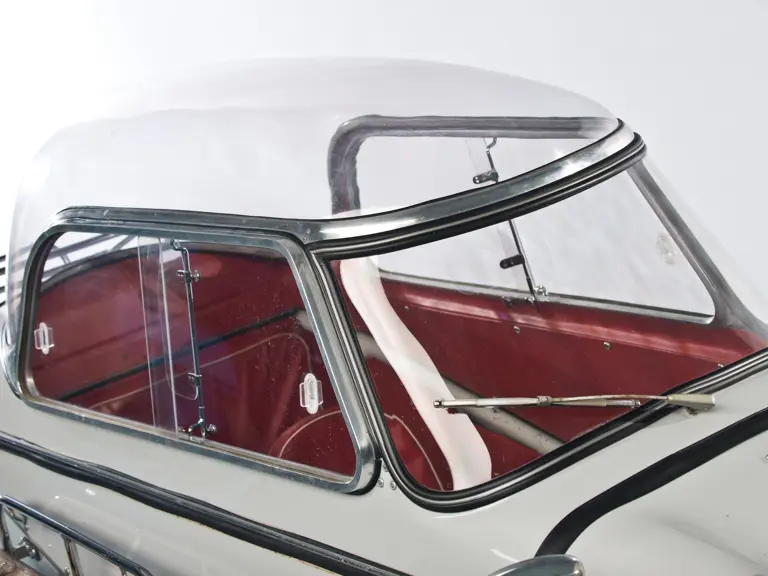
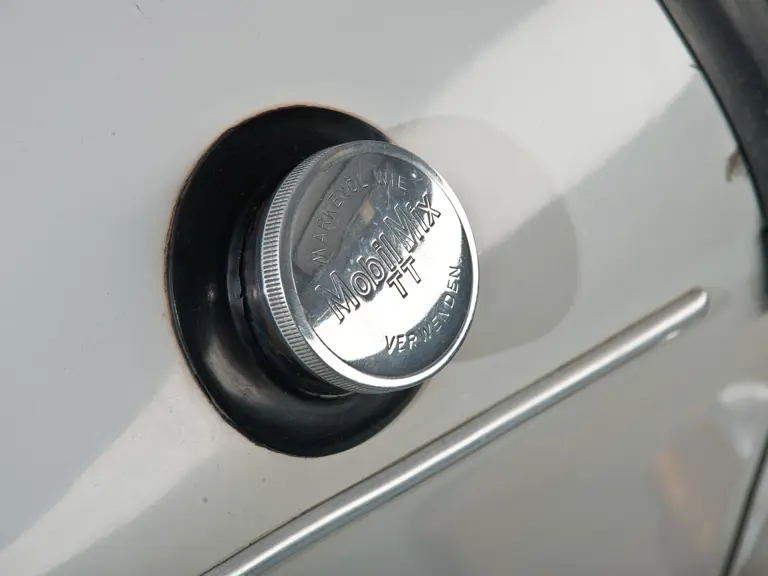
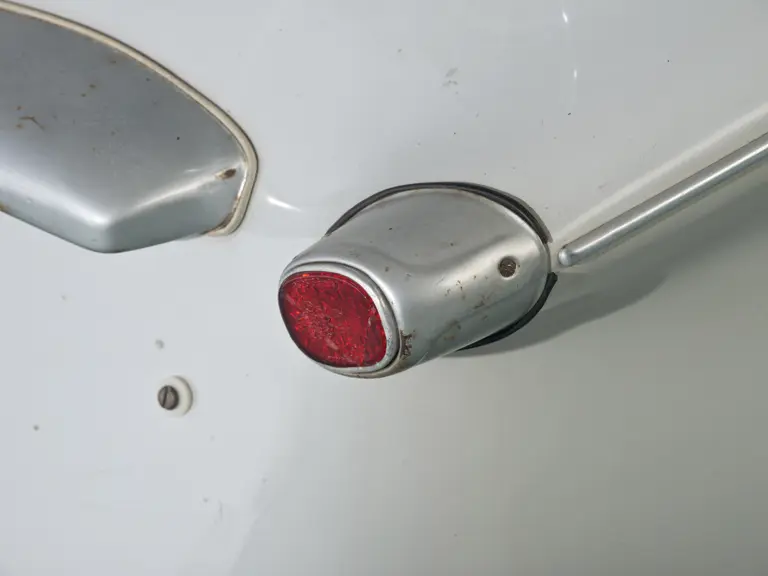
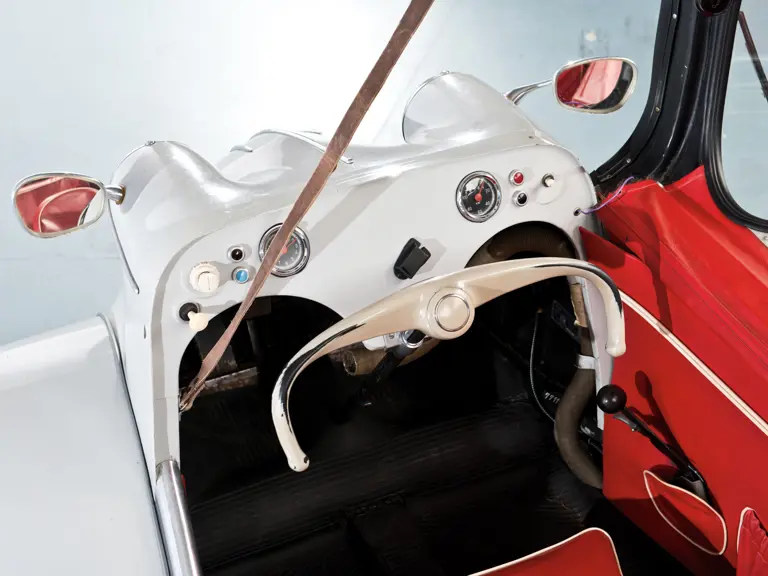
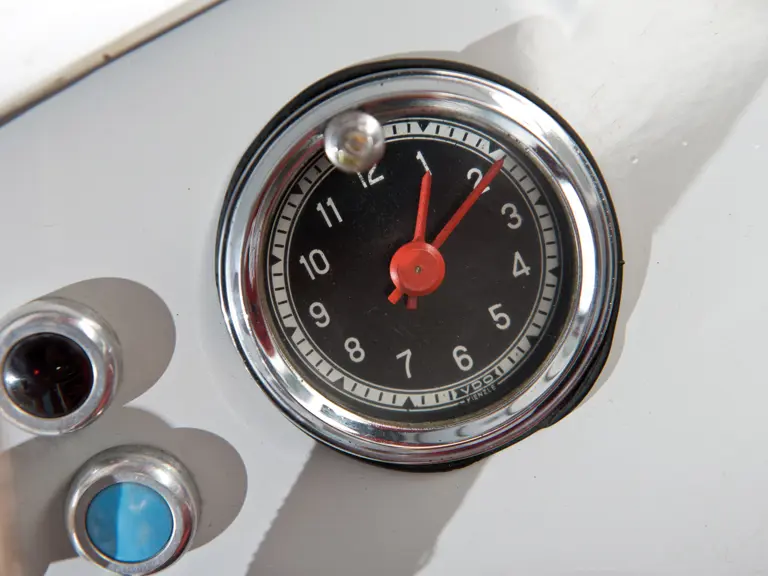
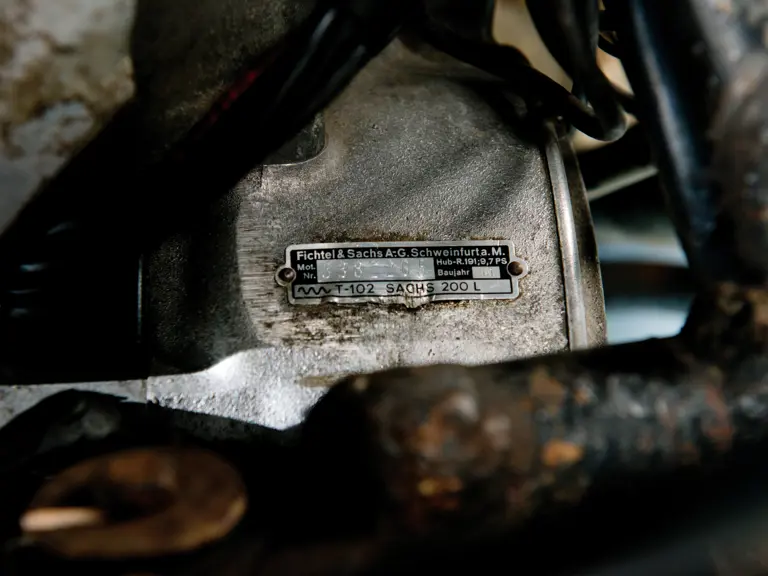
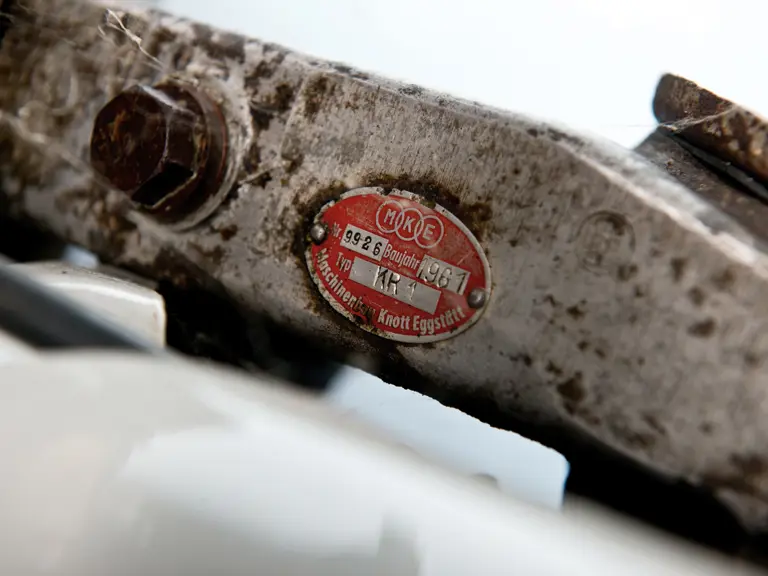
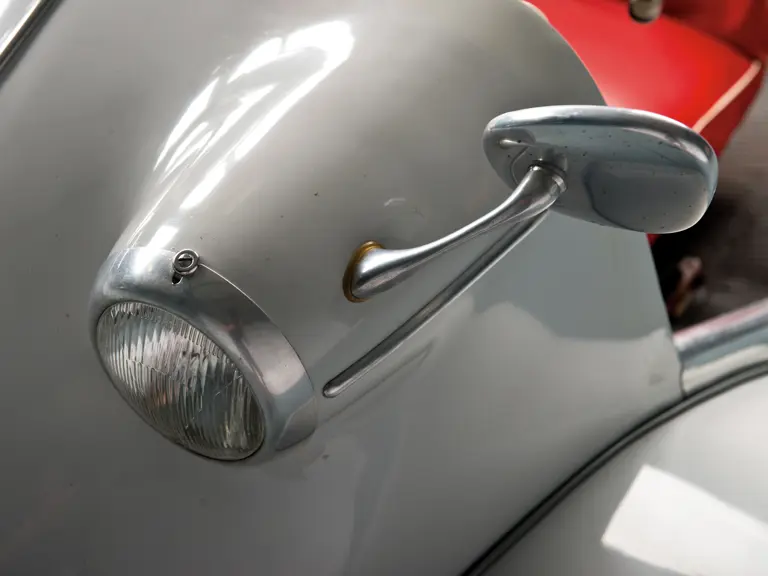

 | Madison, Georgia
| Madison, Georgia

